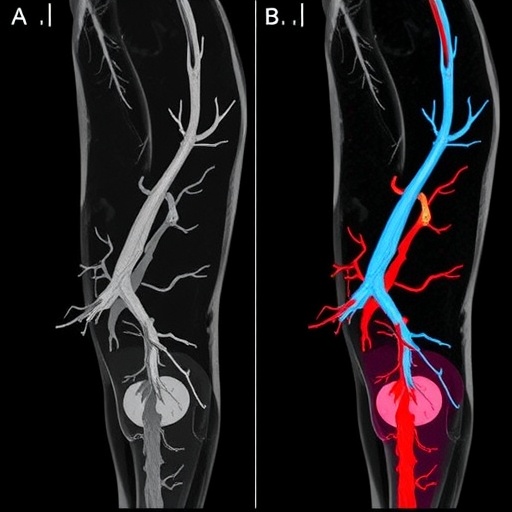In the realm of geriatrics, the careful consideration of medication management in elderly populations, particularly those residing in nursing homes, has become an increasingly critical focus. The research conducted by Yildiz, Durmuş, and Bütün delves into the complexities surrounding the use of potentially inappropriate medications among nursing home residents, guided by the TIME criteria. The implications of their findings extend not only to pharmacological outcomes but also to the broader scope of geriatric syndromes that frequently afflict older adults.
One pivotal aspect of this research is the meticulous examination of medication prescriptions against the backdrop of the TIME criteria, which serve as a benchmark for identifying drugs that may pose unnecessary risks. This is especially pertinent in the context of nursing homes, where residents often face polypharmacy—a scenario where multiple medications are prescribed to address various health conditions. With polypharmacy comes the likelihood of adverse drug reactions, interactions, and increased healthcare costs, stirring an urgent need for scrutiny and reform within this domain.
Furthermore, the researchers explored the relationship between inappropriate medication use and the prevalence of common geriatric syndromes, such as falls, cognitive impairment, and delirium. These syndromes are not just isolated phenomena; they interrelate in a complex web that can exacerbate health outcomes for nursing home residents. The study underscores that inappropriate prescribing practices could significantly contribute to the severity or onset of these syndromic challenges, amplifying their impact on patient quality of life.
By utilizing the TIME criteria as a guiding framework, the authors aimed to identify trends and patterns in medication prescribing practices that could lead to detrimental effects. This criterion-focused approach offers a systematic tool for clinicians and caregivers in assessing the necessity and suitability of prescribed medications, thus promoting safer medication practices within nursing home settings. The researchers advocate for a more vigilant approach towards medication evaluation that aligns with geriatric best practices.
In their findings, Yildiz and colleagues presented compelling data that illustrated the prevalence of potentially inappropriate medications among nursing home residents. Alarmingly, a significant portion of the individuals studied were prescribed medications that do not align with established guidelines. This raises pressing questions about the training and awareness of healthcare providers regarding geriatric pharmacotherapy. A concerted effort is needed to enhance education on safe prescribing practices tailored specifically for older adults.
Moreover, the study highlights the importance of collaborative care models in addressing medication management among elderly populations. By fostering deeper communication channels between healthcare providers, pharmacists, and nursing home staff, there is a greater opportunity to optimize medication regimens. This teamwork approach can also aid in the identification of patients who may not only be taking potentially inappropriate medications but might also be adversely affected by them.
The researchers ultimately argue for the necessity of routine medication reviews as part of standard operating procedures in nursing homes. Such reviews could pave the way for de-prescribing unnecessary medications and, when possible, the substitution of safer alternatives. This proactive strategy may mitigate the risks associated with inappropriate medication use while improving overall health outcomes for residents.
This study serves as a crucial reminder of the pivotal role healthcare providers play in advocating for their patients’ safety and well-being. Through heightened awareness of the potential dangers of inappropriate pharmacotherapy, medical professionals can guide older adults toward more favorable health outcomes. The implications of this research extend to policy-level considerations as well; healthcare systems should prioritize implementing protocols that safeguard elderly patients from the complications associated with suboptimal medication practices.
Interestingly, as the geriatric population continues to grow globally, the call for improved medication management will only intensify. Adapting the findings of this research could offer healthcare systems the insights needed to reform geriatric care models, aligning medications with best practices while placing greater emphasis on patient safety. As such, this work stands poised to influence policy discussions and educational initiatives centered on pharmacotherapy in geriatrics.
Importantly, the significance of this research goes beyond mere statistical analysis; it sheds light on the lived experiences of nursing home residents. Each statistic represents an individual whose health and quality of life are inextricably linked to appropriate medical treatment. Moving forward, strategic interventions based on the insights gleaned from this study could establish a foundation for change that prioritizes agility, safety, and efficacy in medication management for the elderly.
Consequently, the insights derived from Yildiz, Durmuş, and Bütün’s study invite further exploration and dialogue concerning the methodologies employed in geriatric pharmacotherapy. This work lays a strong foundation for future research to build upon, emphasizing the importance of maintaining a patient-centered focus that ensures the voices of older adults are not only heard but prioritized in the care they receive.
In conclusion, the research conducted by Yildiz et al. serves as a timely reminder of the pressing challenges accompanying medication management in the nursing home demographic. The implications of their findings have the potential to reshape how healthcare providers approach geriatric pharmacotherapy, ultimately ensuring that elderly patients receive safe, effective, and appropriate medications tailored to their unique health needs. As we move forward, fostering a culture of vigilance and collaboration in medication management practices will undoubtedly yield benefits for some of the most vulnerable populations in our society.
Subject of Research: Potentially inappropriate medication use among nursing home residents and its relationship with common geriatric syndromes.
Article Title: Potentially inappropriate medication use by TIME criteria in nursing home residents and its relationship with common geriatric syndromes.
Article References:
Yildiz, Y., Durmuş, N.Ş., Bütün, V.K. et al. Potentially inappropriate medication use by TIME criteria in nursing home residents and its relationship with common geriatric syndromes.
Eur Geriatr Med (2025). https://doi.org/10.1007/s41999-025-01344-3
Image Credits: AI Generated
DOI: https://doi.org/10.1007/s41999-025-01344-3
Keywords: geriatric syndromes, inappropriate medications, nursing homes, TIME criteria, polypharmacy, medication management, elderly care, healthcare professionals, patient safety, pharmacotherapy.
Tags: adverse drug reactions in nursing homescognitive impairment in older adultsdelirium in nursing home residentsfalls and medication risksgeriatric medication managementgeriatric syndromes and medicationhealthcare costs of polypharmacyinappropriate medications in nursing homesmedication safety in elderly populationspolypharmacy in elderly carereforming medication practices in geriatricsTIME criteria in geriatrics





